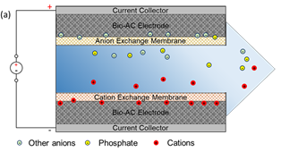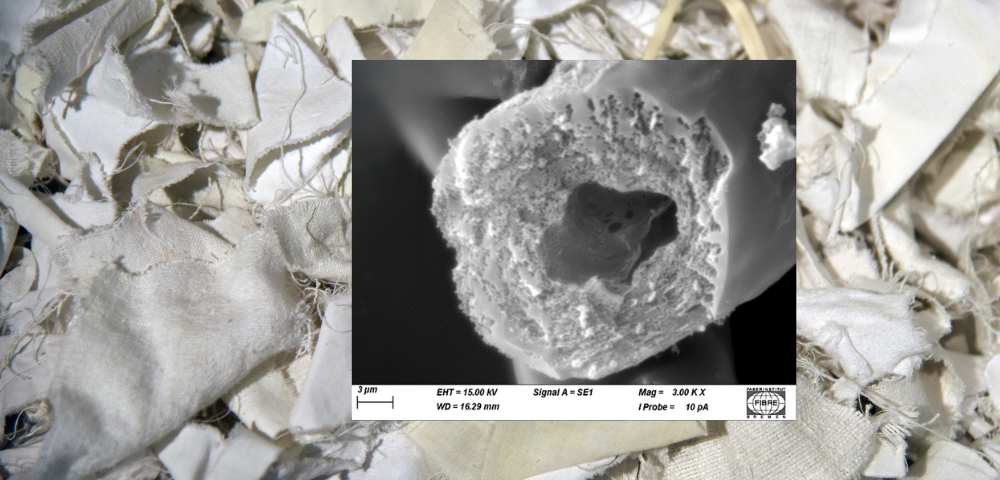– News from FIBRE –
The PERSEPHONE research project promises wastewater treatment, textile upcycling and raw material recovery at the same time. From July, the Faserinstitut Bremen e.V. (FIBRE) will be part of this research project, which is dedicated to the recovery of phosphorus with the help of carbonized cotton textiles.
The starting point for the research work is the increasing eutrophication of water bodies, i.e. the excessive input of nutrients due to over-fertilization. In addition to nitrogen, phosphorus is an important mineral for plant growth, which has to be extracted and processed at great expense. The aim of the project is to develop a process with which excess phosphorus can be removed from surface or wastewater. The desired process offers the additional advantage that the raw material Phosphorus can be recovered from wastewater for reuse. Another source of the fertilizer can help to achieve the United Nations‘ development goals with regard to food security. Key is that the recovery should be achieved using materials that are as sustainable and renewable as possible. This is where cotton and the use of used textiles come into play.
Project participants from Brazil and Germany
In addition to FIBRE, other partners from Brazil and Germany are involved in the project: The Brazilian agricultural research organization EMPRAPA, the University of Paraíba, the Brazilian cotton association APRAPA as well as the German Technological University Dresden and the University of Bremen. The project is coordinated by the Forschungskuratorium Textil e.V. and supported by an accompanying project committee, in which the Bremen Cotton Exchange and members of the association are also represented.
The Process

The phosphorus is to be recovered using an electrosorption process for the selective separation of ions with low energy and chemical consumption (MCDI). In this process, cotton or used textiles are first processed into textile surfaces, then carbonized into bio-based activated carbon fibre electrodes (bio-ACFT) and chemically modified for the selective adsorption of phosphorus. The aim of the research project is to find out which starting materials are best suited for this process and how the process can be organized and standardized from textile processing, carbonization and chemical modification of the materials to the production of bio-ACFT electrodes. These findings will be used to develop a new process for recovering phosphorus from water.
Why Cotton?
To separate the phosphorus ions, a material is required that can be processed into a surface. Through carbonization, the naturally large surface area of cotton can be increased a thousand-fold. This surface is necessary to function as a membrane to which charge is applied to attract the various particles dissolved in the water, which are then selected and separated by the process. The Fiber Institute and the cotton-related research institutions in Brazil bring their many years of expertise in the analysis and research of cotton fibers. At the beginning of the research process, they examine cotton and used textiles for their suitability and appropriate preparation for the process. This can be used to develop an upcycling option for low-quality cotton and used textiles, as well as to develop a cost-effective starting material for the recovery process.
The research project is expected to start on July 1, 2024, is designed to last two years and will receive funding of around one million Euro.
Photo above: Activated carbon fibres in front of textile waste (FIBRE Bremen, Canva)

